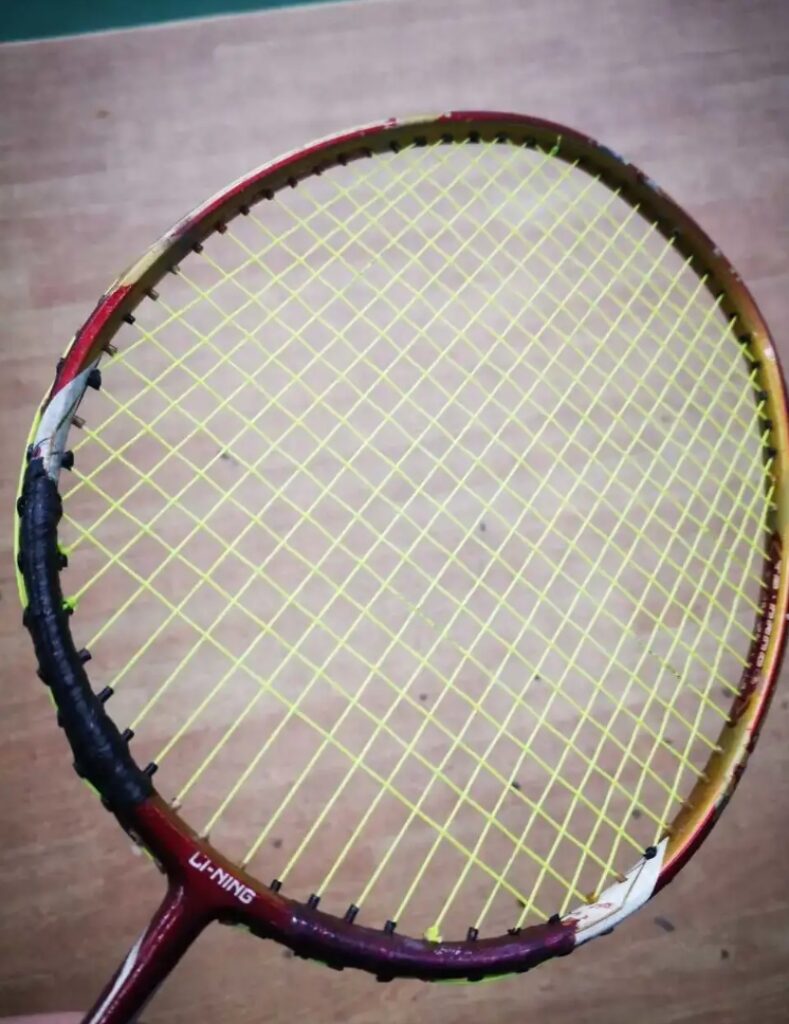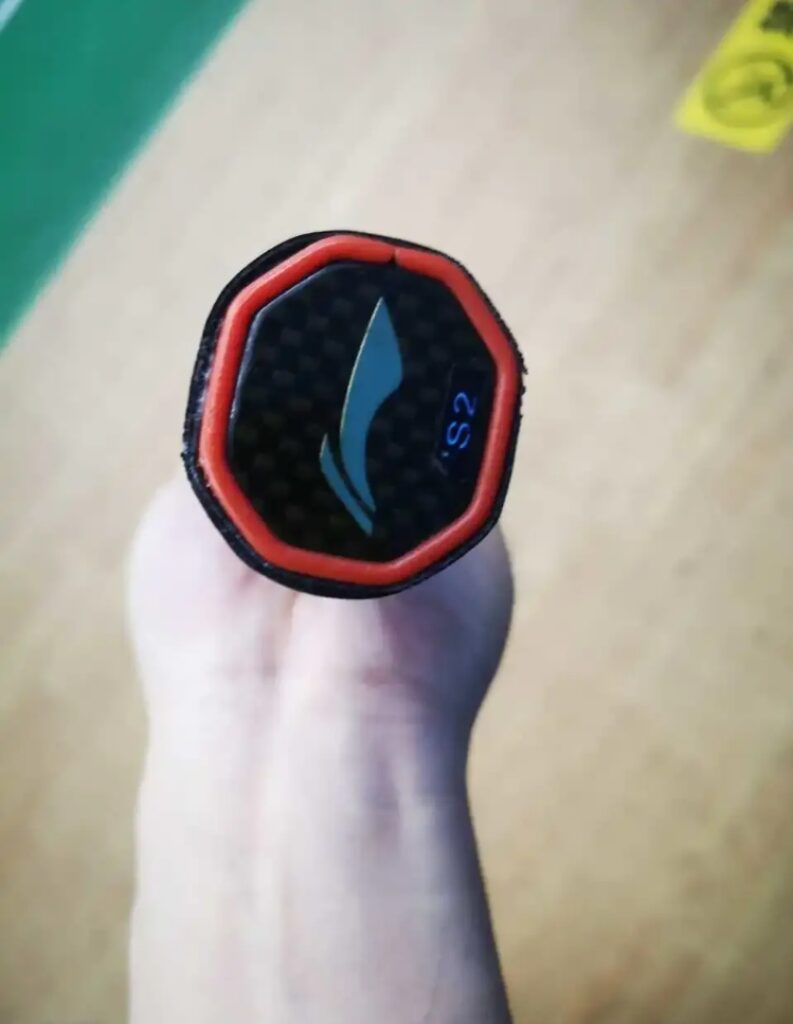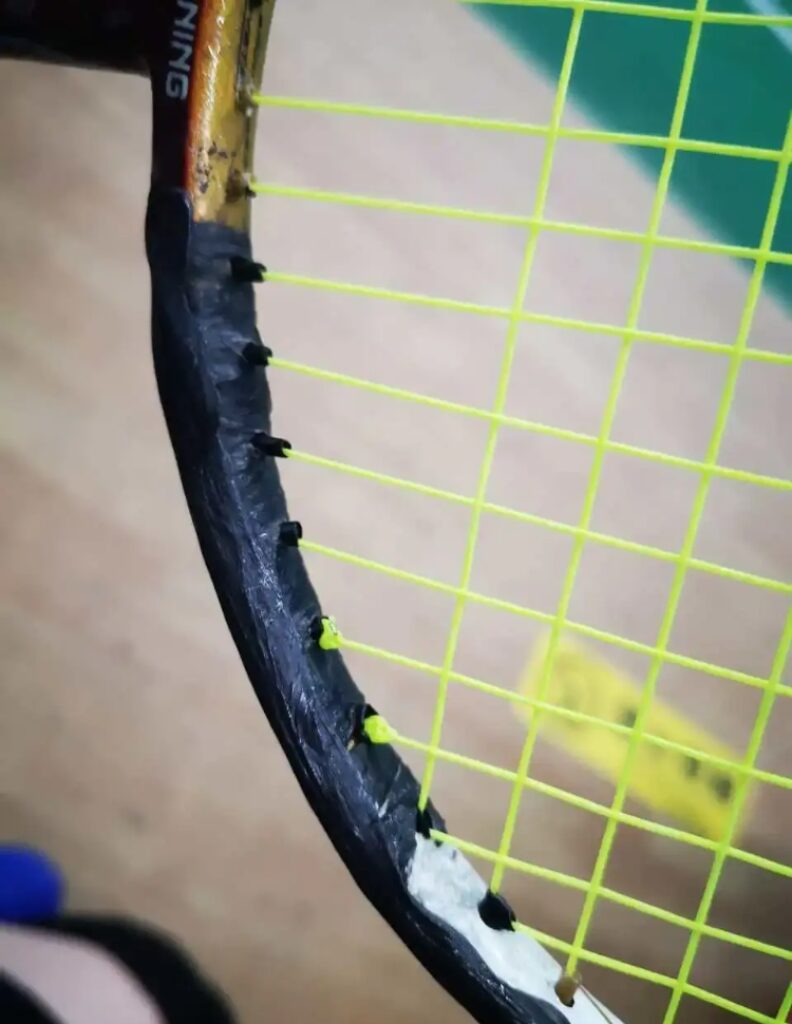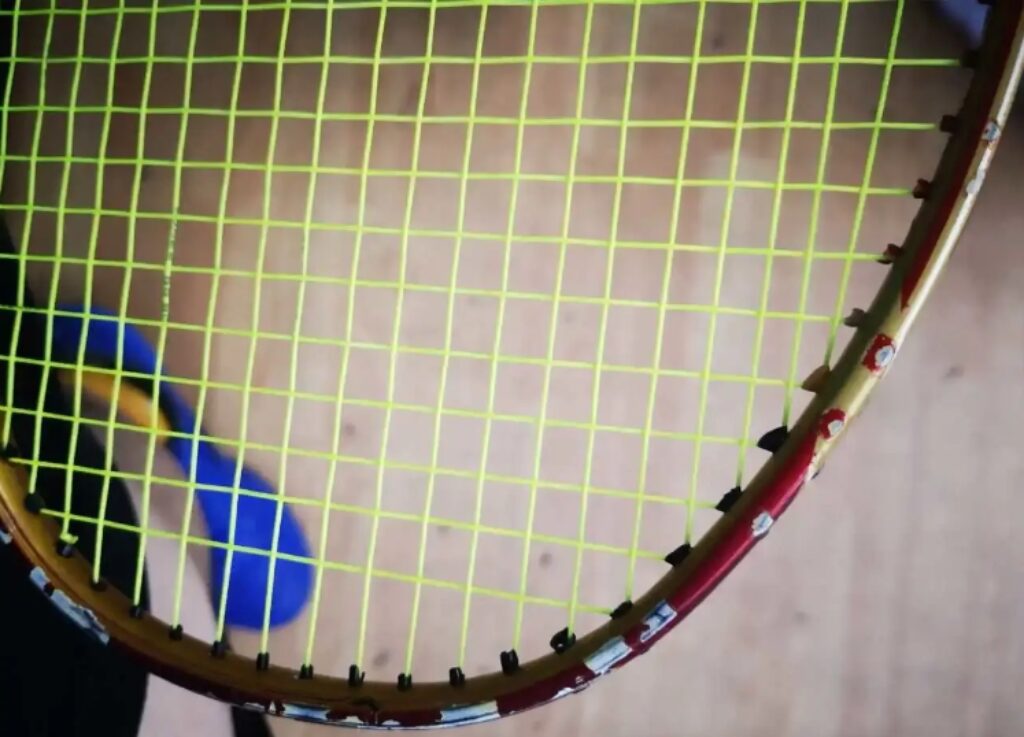My trial experience: Generally speaking:
- I rarely play with Li-Ning rackets;
- I rarely play with discontinued models;
- I don’t play with repaired rackets;
- I don’t use knock-offs. This time, the racket hit all four points.
It was a coincidence. Near the end of the year, I had sold most of my rackets, and because I forgot to bring my current racket back to my workplace after visiting home, the only racket left in my dorm was the Viper, while the other backups were still unused. When I got back, the string broke on the first game, so I had to shamelessly borrow a racket from an old friend. To avoid damaging it, I chose the most beat-up one.
Upon closer inspection, I realized it was an old friend that looked familiar, though I had never used it.

Specifications: 3US2, total weight and balance point unknown, soft shaft, pure box frame, strung at 25 lbs with BG66U.
At this point, I really can’t describe the appearance. Originally, the racket’s paint job was the classic “tomato and scrambled eggs” (red and yellow), but this battle-worn version looks like the eggs were burned. The racket is scorched black around the 4 and 10 o’clock positions. I’m not sure if it was just painted black or if this is a poorly done repair, but it feels bumpy. The racket is heavily battle-damaged, and the paint looks like it went through a Van Fleet-level bombardment. There’s no smooth spot left on the entire racket. When it was in perfect condition, the color scheme gave me the impression of a wealthy family’s traditionally decorated Chinese-style living room, but it’s definitely not my cup of tea.

With a 3U box frame, swing speed isn’t something to expect, but it doesn’t feel overly head-heavy, so overall, it’s still a balanced racket, and it wasn’t difficult to handle. After a few clears, I was even a bit confused—was this really an old flagship model from Li-Ning? It was so easy to drive! The ease of use comes from the relatively soft shaft and the string bed, which wraps around the shuttle well, providing a soft hitting experience with low difficulty in returning shots. During a few test clears, I could clearly feel the power transfer and effortless returns. Is this the ArcSaber? But it’s even easier to handle than the Arc 11—a “sugar water” racket? WTF?

If it were just soft, I wouldn’t be so surprised. The key is that the elasticity of the N90 II is also excellent. The balanced nature of the racket allowed me to seize opportunities to press down even in less proactive situations during doubles play. Even when my preparations for smashes were insufficient, the quality of the shots remained high—good speed, good placement. When I hit with force, I could feel the string bed and shaft bending, a sensation similar to the Arc series. The stored elastic potential energy transmitted to the shuttle created a strong sense of power. This was all while using a battle-damaged, possibly repaired N90 II. I wonder how much easier it would be to play with a fully intact one.

I’m confident that it also performs well with net shots, as the strong hold on the shuttle allows for more adjustments when making returns. However, the weakness of the softer shaft became apparent during fast exchanges in drives. Each swing of my forearm seemed to bring out the shaft’s flexibility, particularly during rapid mid-court rallies. There was a lack of consistency between my wrist and racket face, increasing the chances of off-target shots and making it easier for my opponent to press me. With just one game with the N90 II, I wasn’t inclined to do fine-tuned plays. I focused on pressing down when possible, driving when I could, and lifting to get out of trouble when needed. Defense and backhand shots were more manageable thanks to the soft, bouncy setup—just exert power, and that’s it. Playing this way didn’t feel burdensome at all.

The experience was very limited, and I probably only scratched 70% of its full potential. But the impact was definitely strong. To be honest, even if someone gave me an N90 II in this condition, it wouldn’t have stirred any interest in me to try it. If I hadn’t been completely out of usable rackets, I probably wouldn’t have had the chance to test it.
A limited-time experience, not a long review, with more emotional than rational analysis. After the game, I felt like I’d been slapped (in a good way) by the product power of old Li-Ning products.


Leave a Reply